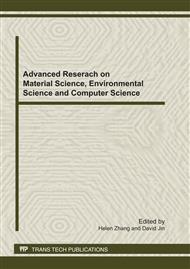p.144
p.148
p.152
p.156
p.160
p.164
p.169
p.173
p.177
Composition and Antimicrobial Activity of the Essential Oil of a Wild Kiwi
Abstract:
A medicinal wild kiwi in China, Actinidia valvata Dunn, has been well known for its activities against leprosy and cancers. The compositions and the antimicrobial activity of its leaf oil were reported for the first time. The oil obtained by hydrodistillation and analyzed by GC and GC-MS, was characterized by the high content of monoterpenes. Linalool (48.14%) is the major component identified, followed by 1,2-dimethyl-lindoline (7.94%), linolenic acid methylester (6.57%) and (E)-phytol (5.29%). The antimicrobial activity of the oil was evaluated against four bacterial and three fungal species. The results showed that it exhibited a mild antibacterial activity against two Gram-positive bacteria (Staphylococcus aureus and Bacillus subtilis), a significant activity against Gram-negative bacteria (Escherichia coli), and no activity on Pseudomonas aeruginosa. The test fungi were more sensitive to the oil, with a MIC range of 0.78~1.56 μL/mL than bacteria in the range which were significantly higher from 0.78 to 25.50 μL/mL.
Info:
Periodical:
Pages:
160-163
Citation:
Online since:
August 2011
Price:
Сopyright:
© 2011 Trans Tech Publications Ltd. All Rights Reserved
Share:
Citation:


